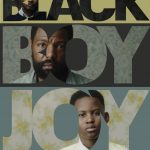Here’s a screenwriting truth.
A script is for READERS. A film is for AUDIENCES.
Seems obvious, right? Clearly you can’t have a film without a script but, here’s the deal, our engagement with a script is entirely different than our engagement with a film.
Why?
Because a screenplay is a written document that tells the story in words. This is done in such a way that the reader will visualize the movie in their mind’s eye. Though a script is a blueprint for a story that will be told visually it’s ultimately a piece of writing. Because of this a reader’s engagement with a script is akin to reading a novel.
A film on the other hand is visceral and immersive. A film has the benefit of actors, a visual world, music and special effects. These elements help tell the story in ways that words alone cannot. Given this an audience’s engagement is a lot more focused and full on.
What does this mean for screenwriters?
It means that we have to choose our words very carefully thinking about how the reader will respond. Yes, it’s also essential to keep the audience in mind, but first we need to fully engage the reader and tell a story that will keep them hooked to the very last page.
How can writers keep the reader engaged?
-Immediately grab the reader by getting to the heart of the story quickly. Audiences are engaged with a film from the moment it begins through music, the opening credit sequence and the unique visual world of the story. They have likely seen the trailer and the one sheet and are willing to settle in and let the story unfold. The first pages of a screenplay don’t have this luxury. You have to get to the heart of the story quickly and economically with urgency and tension.
-Clearly establish the world of your story. In a film the unique world of the story is conveyed in every frame. It’s communicated through costumes, set design and music. On the page it’s easy to lose the sense of where the story is set unless we’re reminded of it throughout the piece. With this in mind attention has to be given to the specific detail that communicates the world your story is set in. If your story is set in a rundown urban center this has to be evident throughout the script not just on the first page and then forgotten. You may need more establishing shots or beats that hone in on the kind of details that tell us where the story takes place. On screen the setting is woven into every scene and doesn’t require the same kind of specific focus.
-Establish the visual relationship between characters through their actions. For example if your piece is an interracial romance or involves physical opposites like Laurel and Hardy this relationship will be front and center on the screen. Yet this kind of visual information will soon be forgotten on the page unless it’s apparent in what the characters say and do.
-Succinctly convey action sequences. Action sequences on the page rarely measure up to their on screen version. It’s nearly impossible to convey the excitement and spectacle of adrenaline fueled action sequences without the benefit of stunts, special and visual effects, sound effects, music and performance. Because of this readers generally skim action sequences to find out the outcome – who lives, who dies etc. While action sequences on the page still need to be tension filled and engaging write them with your reader in mind and leave the full blown description to the director and production team.
There’s something else to think about here. Readers/executives are reading screenplays for work. Not only do they have a stack of scripts to read, e-mails to answer and calls to make but they are evaluating the piece with their specific agenda in mind. Be it coverage, financing, repping the writer, seeing if it’s right for their acting client etc. Audiences, on the other hand, are watching a film for enjoyment – it’s entertainment. This means readers and audiences are coming at the material from completely different perspectives and engage with it in very different ways.
Ultimately (fingers crossed) a screenplay will eventually be a movie. This means the writer needs to tell the story in a way that communicates what we’ll see and hear on the screen and enables the reader to see the movie in their mind’s eye. Film, clichéd as it might be, is a visual medium and at the end of the day visuals come first. That said in order for a script to eventually become a movie it has to fully engage the reader. Knowing how to keep your reader hooked through to the very last page is the first step in getting your story on the screen.
originally published in Scriptmag





